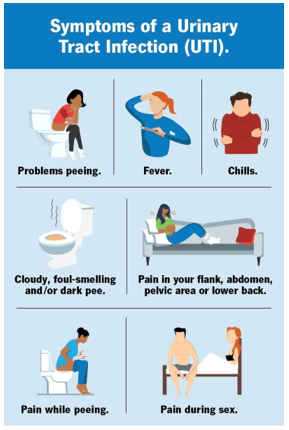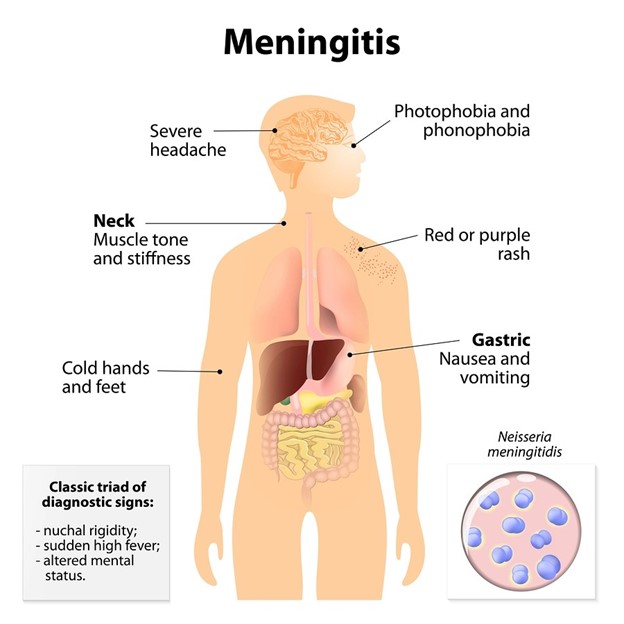A nurse is assisting with the care of a client in a medical-surgical unit.
Vital Signs
05:00
Temperature 36.6 C (97.9 F)
Heart rate 100/min
Respiratory rate 22/min
Blood pressure 160/98 mm Hg
Oxygen saturation 96% on oxygen 2 L/min via nasal cannula
14:00
Temperature 36.8 C (98.3 F)
Heart rate 90/min
Respiratory rate 18/min
Blood pressure 138/88 mm Hg
Oxygen saturation 97% on oxygen 2 L/min via nasal cannula
Which of the following actions should the nurse take to decrease the risks for a urinary tract infection for this client? Select all that apply.
Encourage the client to drink 3,000 mL of fluid daily.
Change the indwelling urinary catheter tubing every 3 days.
Place the drainage bag on the bed when transporting the client.
Empty the drainage bag when it is half-full.
Review the need for the indwelling urinary catheter daily.
Use soap and water to provide perineal care.
Correct Answer : A,D,E,F
To decrease the risks for a urinary tract infection for this client, the nurse should take several actions. The nurse should encourage the client to drink 3,000 mL of fluid daily to help flush bacteria out of the urinary tract¹. The nurse should also empty the drainage bag when it is half-full to prevent bacterial growth¹.
Additionally, the nurse should review the need for the indwelling urinary catheter daily and use soap and water to provide perineal care¹.

Nursing Test Bank
Naxlex Comprehensive Predictor Exams
Related Questions
Correct Answer is ["B","C","D"]
Explanation
The correct answers are b, c, and d.
a. It is not appropriate for the nurse to threaten the client's child with reporting for maltreatment without
further assessment and evidence.
b. Asking the client's child to provide details regarding the client's fractured arm will provide additional information about the client's injury and help the nurse assess the potential for abuse or neglect.
c. Discussing respite care options with the client's child may help alleviate any caregiver stress or burden, and ensure the client's continued care and safety.
d. Speaking to the client privately will help establish trust and rapport, and allow the client to disclose any concerns or issues that they may not feel comfortable sharing in front of their child.
e. Providing legal advice regarding power of atorney is not within the scope of nursing practice and should be referred to a legal professional. Additionally, the client's capacity to make decisions and appoint a power of atorney should be assessed before providing such advice.
Correct Answer is A
Explanation
The normal range for potassium levels is generally between 3.5 to 5.0 mEq/L. A potassium level of 3.5 mEq/L falls within the lower end of the normal range, suggesting that the client's potassium levels are relatively stable. This finding alone does not indicate the overall effectiveness of the behavioral plan.
The normal range for sodium levels is typically between 135 to 145 mEq/L. A sodium level of 130 mEq/L falls below the normal range and indicates hyponatremia (low sodium levels). Hyponatremia can be a cause for concern, and it suggests that the behavioral management plan may need further attention or adjustments.
The normal range for hemoglobin (Hgb) levels varies depending on factors such as age and gender. However, in general, a Hgb level of 10 g/dL falls below the normal range and indicates anemia. Anemia is a common complication in individuals with anorexia nervosa and can result from inadequate nutrient intake. This finding suggests that the behavioral plan may need further evaluation and adjustment to address the client's nutritional needs.
Body Mass Index (BMI) is a measure that relates weight and height. A BMI of 14.5 indicates severe underweight and is well below the normal range. This finding suggests that the client's nutritional status is still significantly compromised, and the behavioral management plan may require further attention to support weight restoration and overall recovery.

Whether you are a student looking to ace your exams or a practicing nurse seeking to enhance your expertise , our nursing education contents will empower you with the confidence and competence to make a difference in the lives of patients and become a respected leader in the healthcare field.
Visit Naxlex, invest in your future and unlock endless possibilities with our unparalleled nursing education contents today
Report Wrong Answer on the Current Question
Do you disagree with the answer? If yes, what is your expected answer? Explain.
Kindly be descriptive with the issue you are facing.
